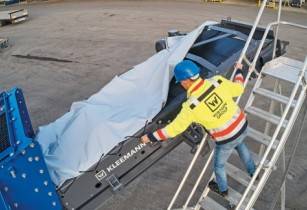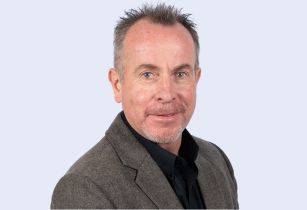The Hannover Messe Digital Edition 2021 will see Arburg present a new turnkey system that is set to raise the bar in aspects of digitalisation, automation and the circular economy in plastics processing
Digitalisation, automation and smart assistance systems are all tools that make it easier to work on, and with, injection moulding machines on a daily basis. Based on an electric Allrounder 370 A with a clamping force of 600 kN, Arburg?s exhibit will demonstrate a system that not only documents production processes seamlessly, but also enables them to run smoothly, efficiently and reliably.
Automated and 100% traceable
The exhibit will use a single hot runner mould from Haidlmair to produce a crumpled PP cup. The handling work will be the responsibility of a new vertical robotic system, the Multilift V 20, with a 20kg load capacity and a transverse design. Once they are removed from the mould, the cups will first be sent for plasma treatment and then make their way to a digital printing station. This means that the product enhancement stage is integrated directly into the production cell. It is possible to choose from three different images on a tablet in order to print the crumpled surface of the cup. Once polished, the cup?s surface is also adorned with two DM codes: one containing the process data for traceability purposes and the other containing the material information with recycling in mind.
The Allrounder is equipped with an IoT gateway, providing a standardised form of networking and software such as the Arburg host computer system or an ERP tool makes it possible to record and analyse production data in real time and significantly increases production efficiency and transparency. In this application, the Arburg Turnkey Control Module (ATCM) SCADA system visualises all relevant process and quality data and merges it for specific parts. To achieve this, the injection moulding machine, automation systems and peripheral equipment ? in this case, the digital printer ? each send the relevant data to the ATCM. This makes every individual cup 100% traceable.
Digital twin ensures correct sorting
Since 2019, Arburg?s circular economy and resource conservation activities have been grouped together under the arburgGREENworld programme ? helping the company to become a system provider that ensures sustainability as part of the circular economy. As an exclusive mechanical engineering partner in the R-Cycle project initiated by the company Reifenhaeuser, Arburg is using its crumpled cup production as an application example to demonstrate how high-quality recycled material can be recovered from plastic waste after the products have been used, closing the materials loop. At the heart of R-Cycle is a database containing a full set of information about the substances used in plastic products, which means that each product has a digital twin. Data relating to aspects such as raw materials and colouring agents are transmitted as early as the injection moulding stage, and the product then receives a machine-readable DM code. When the code is read at recycling facilities, the product can be sorted as appropriate.
Smart machine controller
In the future, smart machines will open up all kinds of networking options, monitor and adaptively control their processes, and provide active support for operators in every situation. Machine controllers will play a central role in this, providing input in process control, quality assurance and traceability ? and several features of the exhibit have been designed with this in mind. The Allrounder with Gestica controller, for example, is equipped with the ?aXw Control FillAssist? tool, which makes it possible to run filling simulations directly on the controller screen. The filling level of the component is animated in relation to the current position of the screw as a 3D graphic in real time. Three other control systems ? the aXw Control ScrewPilot, PressurePilot and ReferencePilot ? enable adaptively regulated injection. They use control strategies that build upon one another and provide solutions for essential quality requirements, such as maintaining constant shot weights and ensuring that moulds are filled evenly.



























